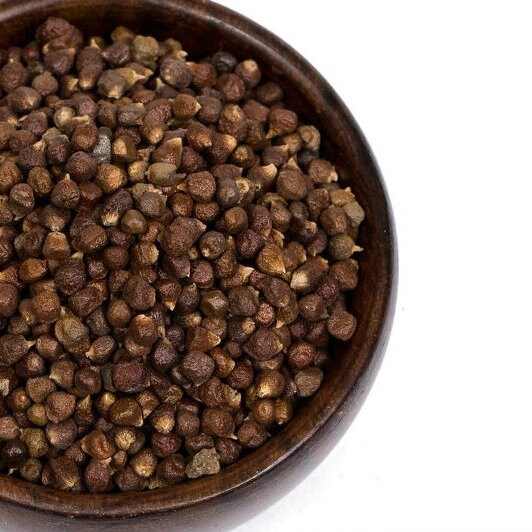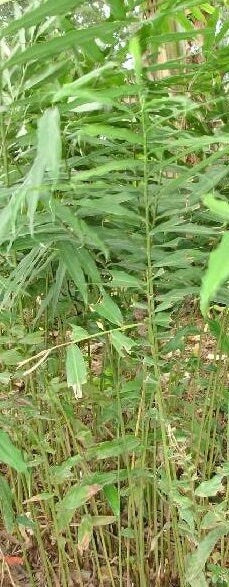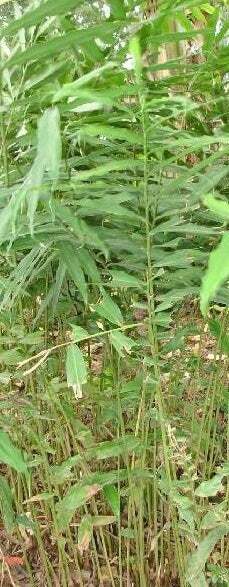1
/
of
5
Florida Plants Nursery
Grains Of Paradise
Grains Of Paradise
Regular price
$22.99
Regular price
$29.99
Sale price
$22.99
Unit price
/
per
Shipping calculated at checkout.
00
:
00
:
00
{"id":51210900570395,"title":"Default Title","option1":"Default Title","option2":null,"option3":null,"sku":null,"requires_shipping":false,"taxable":true,"featured_image":null,"available":true,"name":"Mega Pack 100 Pages Adults Coloring Book","public_title":null,"options":["Default Title"],"price":599,"weight":0,"compare_at_price":1099,"inventory_management":null,"barcode":"","requires_selling_plan":false,"selling_plan_allocations":[]}
Couldn't load pickup availability
- Grow your own food
- Organic and Non-GMO
- FREE Shipping
You will receive one healthy Grains Of Paradise Starter Plant!
Most images depict mature plant.
Aframomum melegueta is a species in the ginger family, Zingiberaceae. This spice commonly known as Grains of paradise, Melegueta pepper, alligator pepper, Guinea grains or Guinea pepper is obtained from the plant’s ground seeds; it gives a pungent, peppery flavour. Although it is native to West Africa, it is an important cash crop in the Basketo special woreda of southern Ethiopia.
A. melegueta is a herbaceous perennial plant native to swampy habitats along the West African coast. Its trumpet-shaped, purple flowers develop into 5 to 7 cm long pods containing numerous small, reddish-brown seeds. The pungent, peppery taste of the seeds is caused by aromatic ketones. Essential oils, which are the dominating flavor components in the closely related cardamom, occur only in traces.
Grains of Paradise are commonly employed in the cuisines of West Africa and of North Africa, where they have been traditionally imported via caravan routes in a series of transshipments through the Sahara desert and whence they were distributed to Sicily and Italy. Mentioned by Pliny as “African pepper” but subsequently forgotten in Europe, grains of paradise became a very fashionable substitute for black pepper in 14th- and 15th-century Europe, especially in northern France, one of the most populous regions in Europe at the time.
View full details
Most images depict mature plant.
Aframomum melegueta is a species in the ginger family, Zingiberaceae. This spice commonly known as Grains of paradise, Melegueta pepper, alligator pepper, Guinea grains or Guinea pepper is obtained from the plant’s ground seeds; it gives a pungent, peppery flavour. Although it is native to West Africa, it is an important cash crop in the Basketo special woreda of southern Ethiopia.
A. melegueta is a herbaceous perennial plant native to swampy habitats along the West African coast. Its trumpet-shaped, purple flowers develop into 5 to 7 cm long pods containing numerous small, reddish-brown seeds. The pungent, peppery taste of the seeds is caused by aromatic ketones. Essential oils, which are the dominating flavor components in the closely related cardamom, occur only in traces.
Grains of Paradise are commonly employed in the cuisines of West Africa and of North Africa, where they have been traditionally imported via caravan routes in a series of transshipments through the Sahara desert and whence they were distributed to Sicily and Italy. Mentioned by Pliny as “African pepper” but subsequently forgotten in Europe, grains of paradise became a very fashionable substitute for black pepper in 14th- and 15th-century Europe, especially in northern France, one of the most populous regions in Europe at the time.





N
Nancy Lee Plants are doing wonderfully in my garden.
J
Jared Parker Quick delivery and healthy plants.
B
Brandi Hurley My go-to store for plants.
K
Kenneth Turner Plants are thriving beautifully.
D
Denise Spencer Excellent service and plant quality.




